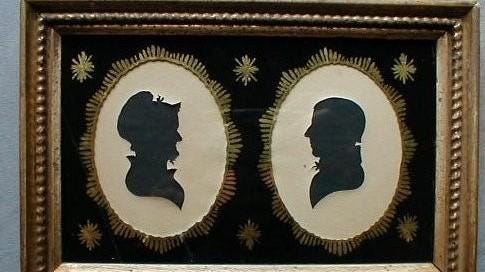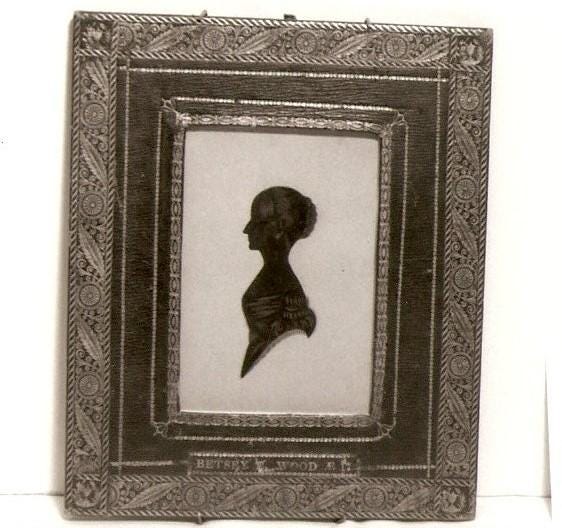Stay-at-home time on your hands? Time for another art project?
ACHC #1965.203.1 Paper cut and mounted over black silk
Perhaps you should consider trying this. These are silhouettes. We have quite a few lovely ones in our collection and hanging in our period rooms. It is an art form with a long history.
The idea and term “silhouette” dates back to the 1700’s. In 1759, as a response to the financial crisis caused during the Seven Years War, Étienne de Silhouette, French finance minister, applied severe economic constraints on the French people, primarily the wealthy. The name “silhouette” was applied to anything that was done or made cheaply.
ACHC #1965.199.1 Paper cut and mounted on black silk
Having a specialist cut paper to capture the portrait outline of a person became an alternative to having an artist paint a portrait miniature. With the economic demands on the wealthy, it was a thriftier choice too. "Shades" or "profiles", as they were known initially, became extremely popular in the mid 1700’s and continued through the 1800s.
Skilled artists could quickly cut a profile from light-colored paper. It was then mounted over black silk to fully display the likeness. This is referred to as “hollow-cut” method. Other artists would sketch the profile on paper and then paint in the form, usually with black paint. Sometimes details were added with India ink. Still other silhouettes were painted on plaster, ivory, porcelain, or glass.
ACHC # 1918.020.1 Paint on paper
In 1783, another Frenchman, Gilles-Louis Chrêtien invented the “physionotrace” apparatus that facilitated the creation of silhouettes. With this invention, the artist, could trace the subject’s profile. The tracing action was transmitted to a needle that would etch the profile on an engraving plate. Multiple portrait copies could then be printed from the plate.
In the U.S., silhouettes were popular from 1790 to 1840. With the invention of photography, widespread interest in silhouettes as a form of portraiture, waned. It became a dying art. However, silhouette artists continued to travel around the country to state fairs and exhibitions into the 1950s and 1960s.
There are still people who appreciate the silhouette as a nostalgic way of capturing a significant occasion or a special image.
If you want to learn the art, check out YouTube DIY videos online. All you need is a subject, a piece of paper, scissors, and a steady hand!
Do you have any silhouettes? I’d love to see photos.








